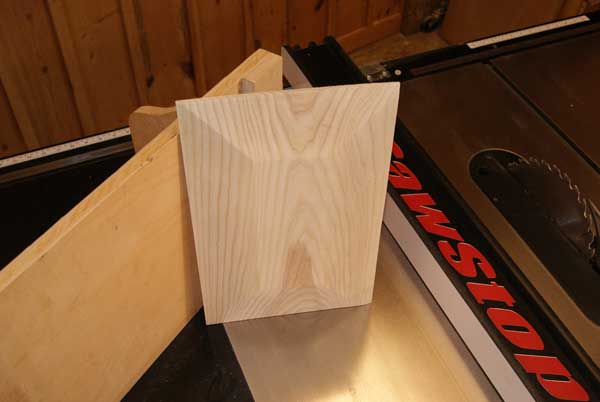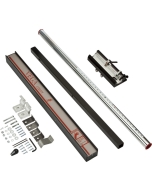Raised Panel Table Saw Jig
The table saw provides an easy way for you to make raised panel doors. All it takes is a simple shop-made sled.
The Sled
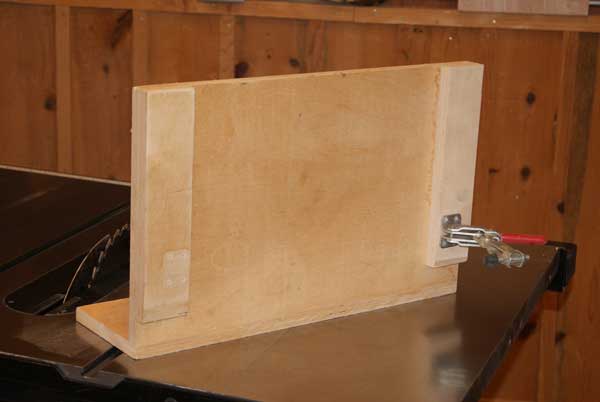
My sled is made from 3/4" Baltic birch plywood. It's 20" long, 13" tall, and 6" wide. The cleat that holds the toggle clamp is 2-1/4" wide. The toggle is located 3" up from the bottom of the jig. I have two cleats on my sled because, since I teach woodworking, I need to use it on both left- and right-tilt table saws. If you have a left-tilt saw, you only need the cleat on the right side. If you have a right-tilt saw, you need the cleat on the left side of the sled.
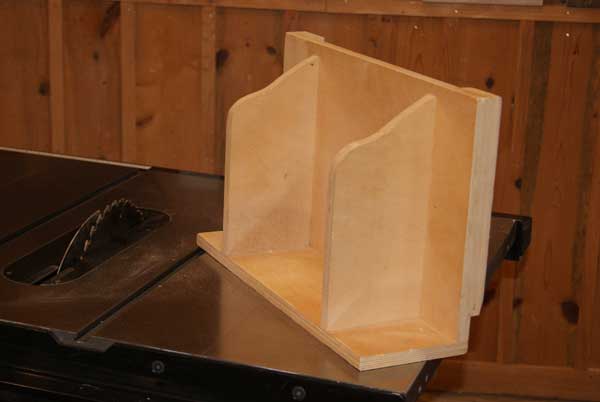
Wings on the back hold the vertical and horizontal surfaces perpendicular and rigid, and they give you something to hold onto when you're using the sled.
Setting Up
If you have a left-tilt saw leave your rip fence in its "natural" position. If you have a right-tilt saw, you'll need to do this operation with the rip fence to the left of the blade.
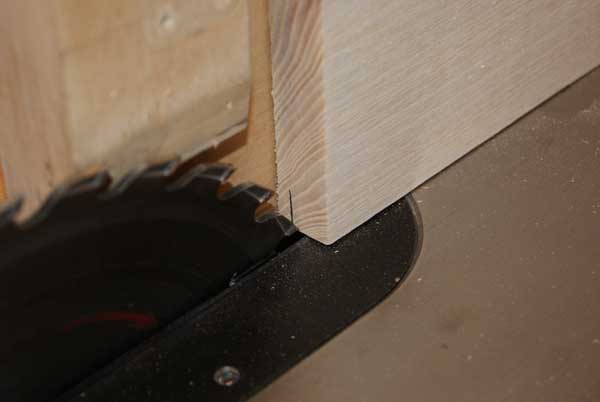
Make a mark on your panel that is 3/16" from the back face (assuming a 1/4" groove in the rails and stiles). With the panel in the sled and the sled against the fence, position the rip fence so the blade will cut outside the line. Use a rip blade, and raise the blade as high as it will go.
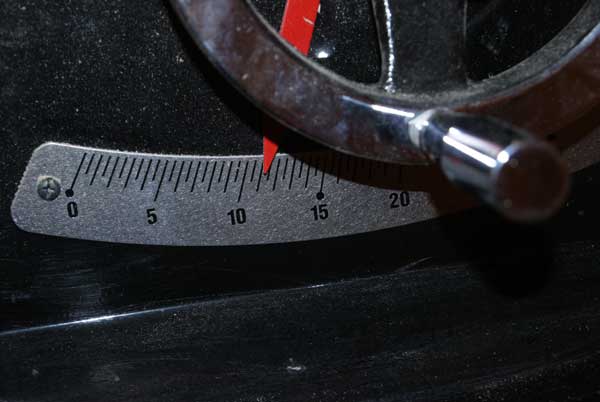
Set the blade angle to 12 degrees.
Cutting Sequence
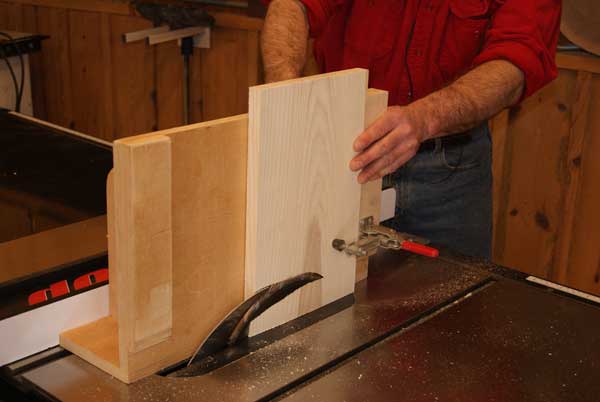
Be sure to do test cuts before cutting the real deal. Make an end grain cut first. You're cutting a lot of wood, so listen to the saw and feed at a rate that allows the saw to make the cut. The cleat prevents the panel from sliding out of the sled under cutting pressure, and a toggle clamp provides holding power that your hands couldn't.

Rotate the panel 90 degrees and make a long-grain cut. Continue the process on the remaining edges.

Check the fit. The edge of the panel should slip into the groove in the rails and stiles about 1/8". If it slips in too far, or not far enough, adjust the rip fence accordingly.
The Result
Sand the saw marks off the surfaces and you'll have a beautiful, and easy to make, raised panel. You can experiment with different angles for different looks, but at an angle less than 12 degrees, the blade won't cut completely through, even at its highest setting.
Keep the inspiration coming!
Subscribe to our newsletter for more woodworking tips and tricks
